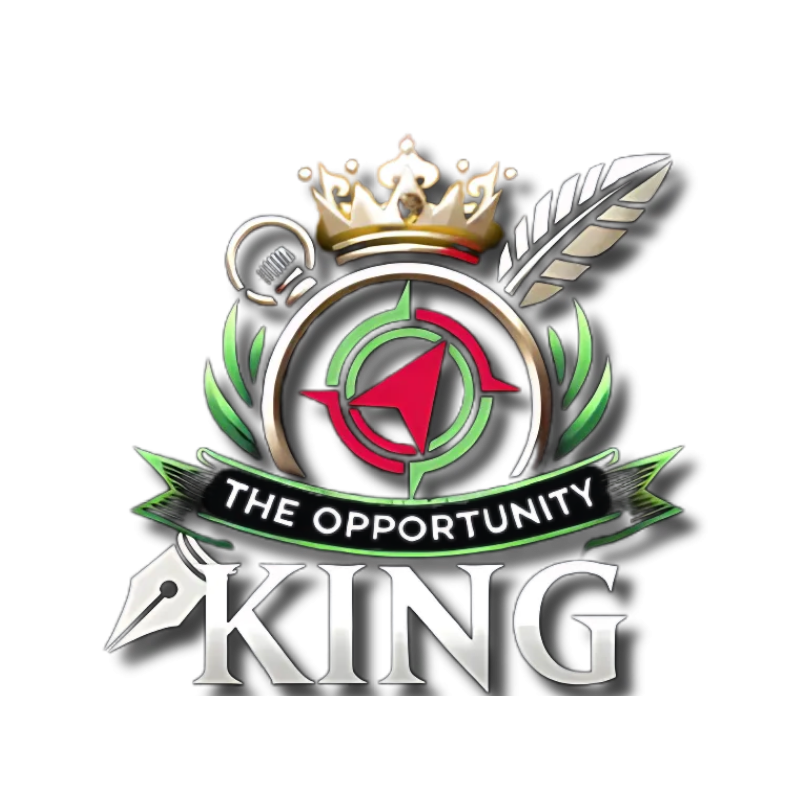This is a subtitle for your new post

In an era where apps help define our daily routines, very few platforms have shaped culture and creativity like TikTok. The short-form video app has not only changed the way we consume content but also fueled careers! But with recent government decisions aiming to ban the app, the ripple effects are being felt far and wide—from content creators to tech giants like Apple. So, what’s really at stake, and what does this mean for you? Let’s dive in.
Why Is TikTok Facing a Ban?
For years, TikTok has been caught in the crosshairs of privacy debates and political tensions. The app’s ownership by Chinese company ByteDance has sparked fears over potential misuse of user data, leading to claims of national security risks. Lawmakers have argued that TikTok’s massive data collection could pose threats, but TikTok has repeatedly denied these allegations, insisting that its data is securely stored and not shared with foreign governments.
As debates continue, a full ban seems unavoidable, leaving millions of users and creators wondering what their digital futures might look like. The key question is: if TikTok disappears from our app stores, what does that mean for users, businesses, and tech platforms alike?
The Fallout on Creators
For creators, TikTok has been more than just an app; it’s been a launching pad for careers. The platform’s unique algorithm has helped countless users turn viral moments into full-time jobs, whether through brand deals, ad revenue, or building loyal followings. This meant that ordinary people were instantly beamed into internet stardom, helping them secure brand partnerships, ad revenue, and even mainstream opportunities. A ban could leave creators scrambling to rebuild their audiences elsewhere, which is no small task in today’s crowded social media landscape.
If you’ve spent years perfecting your TikTok strategy, this moment may feel unsettling. Many creators are already pivoting to platforms like Instagram Reels, YouTube Shorts, and even smaller players like Clapper. The lesson here? Diversifying your presence across platforms is no longer optional—it’s essential for staying ahead.
Apple’s Role in the TikTok Ban
One of the most fascinating parts of the ban is its potential impact on Apple, one of the world’s most influential tech companies. The TikTok ban, has forced Apple to remove the app from the App Store entirely creating a clash between the tech giant and millions of its customers. iPhone users, experienced this uncomfortable reality when TikTok vanished overnight but was unlocked the next day.
Apple is known for prioritizing privacy and user experience, but now it faces an unprecedented dilemma: comply with government mandates or alienate a massive segment of its user base. This raises broader questions about the role of tech companies in navigating government regulations. How far should companies go to balance user trust with compliance? Should Apple risk alienating such a massive chunk of its audience? The outcome could set a critical precedent for how future bans on popular apps are handled.
The Backlash Against Creators: Why Some Support the TikTok Ban
While many creators and users are concerned about the potential TikTok ban, there’s another group that seems to be celebrating it: individuals who argue that creators should “get a real job.” This sentiment has sparked heated debates on social media, highlighting deeper divides between traditional and modern career paths.
Why Are Some People Supporting the Ban?
For some individuals working traditional 9-to-5 jobs, there’s a perception that content creation isn’t “real work.” They view TikTok creators as people who got lucky—turning viral moments into income—rather than individuals who put in effort and strategy. These critics often believe that the ban will force creators to rejoin the conventional workforce, leveling the playing field in what they see as an unfairly glamorized economy.
This mindset often stems from a few key factors:
Misunderstanding the Work Behind Content Creation
Many people don’t see what happens behind the scenes of a successful TikTok account. Hours of brainstorming, scripting, filming, editing, and engaging with followers can go unnoticed. To outsiders, it may seem like creators are being paid for simply “having fun.”
Frustration With Economic Inequality
For those struggling to make ends meet in traditional jobs, watching influencers earn seemingly effortless income can feel frustrating. The flashy lifestyles displayed on social media often fuel resentment, particularly among individuals who feel undervalued in their roles.
Skepticism of Non-Traditional Careers
The rise of social media has redefined what it means to “make a living,” but not everyone is on board. Older generations or those rooted in traditional work ethics may view content creation as unsustainable or frivolous, leading to a lack of respect for the profession.
“Getting a Real Job”: The Reality Behind the Comments
The idea that TikTok creators should “get a real job” overlooks the reality that content creation is already a demanding and legitimate profession. Successful creators often function as one-person businesses, managing everything from marketing and production to finances and brand negotiations. It’s worth noting that many creators transitioned into this field after losing jobs during economic downturns or seeking better work-life balance. For them, TikTok wasn’t an escape from responsibility—it was an opportunity to carve out a new path in an increasingly digital world.
The backlash against creators amid the TikTok ban highlights a broader cultural divide between traditional and modern career paths. It’s easy to dismiss something unfamiliar, but the truth is that the future of work is evolving. Gig economies, digital platforms, and creative professions are redefining what it means to have a career in the 21st century. While some may celebrate the potential fall of TikTok creators, this moment also raises important questions about how we value different types of work. Instead of tearing others down, could this be an opportunity to foster understanding and respect for diverse ways of earning a living?
A Missed Opportunity for Late Adopters
For those who’ve been “meaning to try TikTok,” this ban might feel like a door slamming shut. TikTok offered a distinct, authentic way to engage with audiences—whether you were promoting a small business, sharing hobbies, or simply connecting with like-minded people. However, the end of TikTok doesn’t mean the end of opportunity. Other platforms like Instagram Reels and YouTube Shorts provide similar short-form video features, and they’re likely to attract an influx of TikTok creators and viewers. If you’ve been on the fence about diving into content creation, now might be the perfect time to explore these alternatives.
What This Means for Social Media’s Future
The TikTok ban could reshape the digital landscape in profound ways. Some predict it will usher in an era of stricter government oversight for all social media platforms, both foreign and domestic. If TikTok’s fate is decided by national security concerns, could apps owned by other international companies face similar scrutiny?
On the flip side, the ban could spark innovation. Developers may seize the opportunity to create new platforms that prioritize user privacy while incorporating TikTok’s creative spirit. This moment of disruption might just pave the way for the next big app.
Staying Ahead of the Curve
Whether you’re a content creator, a business owner, or simply a TikTok fan, the best move right now is to adapt. Focus on strengthening your presence on platforms like Instagram, YouTube, or LinkedIn. Experiment with new tools and features to keep your content fresh. And remember, while one app might disappear, creativity and community will always find a way to thrive.
Diversify Your Content
Don’t put all your eggs in one basket. Start building your presence on other platforms like Instagram Reels, YouTube Shorts, and even up-and-coming apps like Clapper or Triller. Each platform has its own unique features and audience dynamics, so tailoring your content for these spaces will help you reach new followers.
- Action Tip: Identify 2-3 alternative platforms and commit to posting regularly. Repurpose your existing TikTok content to get started, but be open to adjusting your style to match the platform’s vibe.
Experiment With New Tools
Every platform has features that set it apart. For example, Instagram’s Stories are great for behind-the-scenes content, while LinkedIn allows you to connect with a more professional audience. By embracing these tools, you can not only keep your audience engaged but also discover new ways to express your creativity.
- Action Tip: Dedicate time to learn platform-specific tools like Instagram Story filters, YouTube’s editing features, or LinkedIn articles. These can help you stand out and add depth to your content.
Engage Your Audience Elsewhere
Social media platforms are just one piece of the puzzle. To maintain control over your audience, create channels outside of these apps where you can connect directly. This could include building an email list, starting a blog, or creating a community on platforms like Discord or Patreon.
- Action Tip: Offer exclusive perks or valuable content to encourage your followers to join your email list or other platforms. For example, give away a free guide, host a live Q&A, or provide early access to new content.
Build Your Personal Brand
Instead of focusing solely on a single platform, think bigger: What do you want people to associate with your name or brand? By building a clear personal brand, your followers will stay loyal no matter where you go.
- Action Tip: Define your niche, values, and unique selling points. Consistently communicate these in your content across all platforms.
Stay Informed and Open to Change
The digital landscape is always evolving. By staying updated on trends, platform changes, and emerging technologies, you can adapt before others. This proactive mindset will keep you ahead of the curve, even in uncertain times.
- Action Tip: Follow industry news, attend webinars, or join creator communities where you can share insights and learn from peers.
The Bottom Line
The loss of TikTok doesn’t have to mean the end of creativity or connection. Think of it as a challenge to innovate and expand. By diversifying your presence, mastering new tools, engaging your audience directly, and focusing on your brand, you can ensure your success no matter what happens next.
Stay flexible, stay creative, and remember: digital opportunities are endless if you’re willing to adapt. The next big platform might just be waiting for you to claim your space.
Final Thoughts
The TikTok ban is more than just a political or technological issue—it’s also a cultural flashpoint that’s sparking debates about the future of work. Whether you’re cheering for the ban, staying neutral, or mourning the loss of your favorite platform—it’s worth considering how these changes reflect broader shifts in society.
At the end of the day, work—whether traditional or unconventional—takes effort, dedication, and skill. Before we dismiss individuals for their efforts to end financial inequality, let’s remember that the digital world offers opportunities that didn’t exist years ago. While the road ahead may feel uncertain, one thing is clear: the digital world will never stand still. By staying flexible and open to new platforms, we can all navigate these changes together. It’s not about typical jobs—AKA “real jobs” versus full time content creation or similar work; it’s about adapting to a changing world.




